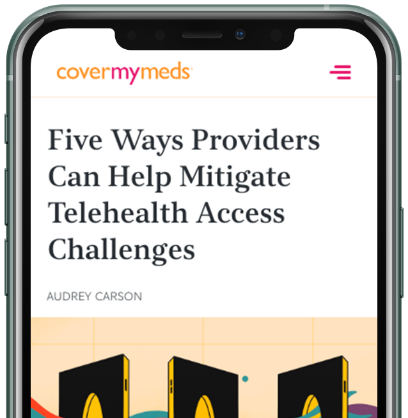Medication Access During Uncertain Times
As our healthcare system bends under the strain of coronavirus, I am heartbroken for those experiencing panic, struggle and hardship.

COVID-19 has required healthcare providers to sacrifice their personal wellbeing to care for the infected, and many patients across the country are struggling to get the medications they need.
As businesses have closed their doors and more people have withdrawn to their homes, technology can be a critical resource for maintaining communication and providing relief to those in need.
Unprecedented Medication Access Challenges for Patients
For many patients, an impossible choice looms in the near future: should I pay for my medications or put food on the table? Do I risk my health (or a dependent’s health) to fulfill more immediate basic needs like food or shelter?
Even during less tumultuous times, patients often struggle to access their medications. In fact, a recent survey to 1,000 patients found that 69 percent have made personal sacrifices to afford their medications.2020 Medication Access Report, CoverMyMeds, 2020
Logistical challenges due to COVID-19 are also impacting medication access. As global supply chains are interrupted and resources are prioritized for emergency use, there are reports of medication scarcity and resulting delays in time to therapy for patients.Running Out of Asthma Inhalers Due to Coronavirus Fight, MedicineNet, 2020
Helping to Improve Medication Access During Times of Crisis
It is estimated that 116 million Americans are covered under high-deductible health plans (~86 million) or lack health insurance coverage altogether (~30 million).2020 Medication Access Report, CoverMyMeds, 2020 During the deductible period, patients are fully exposed to all healthcare expenses, including prescription medications. It is projected that the average person does not reach their deductible until late in May,Deductible Relief Day: How rising deductibles are affecting people with employer coverage, Peterson-KFF Health System Tracker, 2019 and a quarter to a third of people never reach their deductible in a given year.Emergence and Impact of Pharmacy Deductibles: Implications for Patients in Commercial Health Plans, IQIVIA Institute, 2015
Even without the added pressure of job loss due, many patients abandon prescriptions due to cost during the deductible period. For millions of people now unemployed due to the pandemic and paying out of pocket for medications, the risk for abandonment is likely even higher.
Providing options to help lower the cost of medications is crucial for uninsured and underinsured patients – especially during this time. While not well known, off-benefit options for affording medications, such as cash price, may be less expensive than what patients pay through their insurance coverage.Overpaying for Prescription Drugs: The Copay Clawback Phenomenon
Additional savings can be passed on to patients when the cash price for medications is further discounted through a manufacturer-sponsored program. This strategy is different from traditional patient assistance or copay assistance programs as patients do not need commercial insurance to receive the financial relief.
Through CoverMyMeds’ electronic solutions, patients have access to price transparency tools that empower them to make prescription decisions in partnership with their healthcare provider. These tools offer visibility into the insurance cost as well as off-benefit options that may offer a more cost-effective price.
In this way, patients can experience comprehensive medication access support through CoverMyMeds. If patients go through their insurance, they can receive needed assistance throughout the prior authorization (PA) process. If patients are far from reaching their deductible or have trouble affording their out-of-pocket costs through insurance, they can receive financial support in the form of off-benefit affordability options.
Understanding affordability options may seem daunting for both patients and providers, especially when in-person appointments are not possible. Electronic connections through CoverMyMeds’ network of 700,000 providers can help communicate availability of these programs and help patients navigate this new reality of healthcare.
To learn more about how CoverMyMeds’ electronic solutions can help patients during these uncertain times, schedule a virtual meeting today.
The latest healthcare insights, floated right to your inbox.



